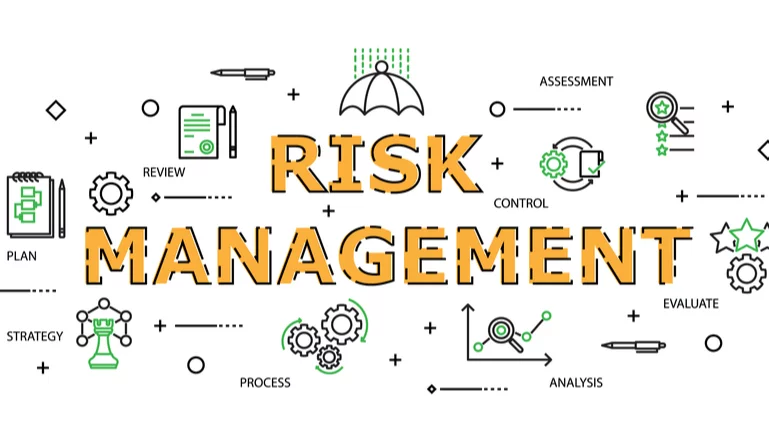All businesses are endeavors where people collaborate, take a risk, and profit when they overcome certain problems. As in science, correlation does not necessarily mean causation: just because you are taking a risk doesn’t mean that you will automatically succeed.
Risk management is a very critical process of business management where all monetary assets of a certain organization are identified, assessed, and controlled. These assets include both the organization’s capital and earning.
Here is everything you need to know about business risk management:
Why is Business Risk Management Important?
As a business, companies must assess & experience a wide variety of risks. These risks include but are not limited to financial uncertainties, technology-related issues, strategic management problems, natural disasters, and any accident, whether it be small or large.
Approximately, 20% of all businesses fail in the first two years of being opened, and this figure increases to 45% in the next three years, and then to 65% in the next five years(1).
Business risk management exists as a medium to mitigate such risks to levels that the company can handle. Even though it is virtually impossible to completely remove all risks from a business endeavor, BRM allows us to battle and keep such risks to a minimum. BRM also examines the relationship between risks and how they will impact a company or organization’s goals.
How Does This Risk Management Process Work?
The business Risk Management process is complex, so it is usually broken down into various separate processes. Here is a 4-step representation(2) of the whole process:
-
Identifying risks
The first step to solving any problem is to figure out all the variables involved. As a business, you are instantly thrown into a pit of ever-burning fire, and you must make sure you don’t burn. A good business constantly studies all risks: both from internal as well as external factors.
Risk type Example Preventable risk Employment liability Strategy risk Decline in sales due to change in trend Compliance risk Government introducing new laws Operational risk Production machine(s) breaking down A good strategy here is to categorize each different risk into one of four types: preventable risks, strategy risks, compliance risks and operational risks.
-
Analyzing risks
After you have figured out what type of risks your business can go through all the variables involved as well as the various factors, you will have to analyze and calibrate for each possible risk. In other words, you must make a list of what might happen if you take a certain risk: the probabilities of such a thing happening and so on.
A good way of analyzing risks is to use a probability scale(3). For example:
Risk of something happening Probability value Very little chance 1 Small chance 2 Some chance 3 A lot of chance 4 Extremely likely to happen 5 Here, we can see that the higher we go the probability value, we see a risk becoming more likely to happen.
-
Dealing with risks
This is the most vital step of the whole process. This process is where you will have to deal with all potential problems in your way. Businesses must study and figure out the best tactics for each risk involved and deal with them promptly.
With how the world of business is progressing and how unforgiving it is nowadays; businesses will find it more effective to deal with using customized solutions instead of generic problem-solving techniques.
-
Monitoring risks & opportunities
The stress of a business does not end with just mitigating risks, these risks and problems may arise sometime again soon. BRM means that one should always stay vigilant so that the organization can deal with such problems effectively.
A good tip to ensuring that such problems don’t happen in the future is to employ the use of insurance. There are insurances on all sorts of problems that could arise in your business. For example, natural disaster insurance covers all-natural disasters. Employment practices liability(4) insurance covers various legal issues that arise for employers due to issues with the employees like lost wages, physical injury, and so on.
What Are Some Disadvantages To Using Business Risk Management?
As with all things, BRM comes with its own set of problems. Not all businesses should implement a world-class level business risk management system. Here are a few of such risks involved:
-
Calculations
BRMs involve very complex calculations that can take days or sometimes weeks to calculate by hand. This can take a lot of your company’s manpower.
-
Ambiguity
A company can only prepare for so many risks at once. This ambiguity can induce a sense of anxiety that can deplete performance.
-
Implementation
No BRM technique can be applied to all companies all at once. Figuring out a good implementation or failing to do so and wasting time with a bad implementation can cost the company valuable time and resources.
-
Mitigation
Sometimes, when trying to mitigate a problem, the problem erupts and grows exponentially. In such cases, it would be more efficient to cut off the problem at its core, even at the expense of a little loss. The average BRM does not support any sort of loss.
What Type of Risks Does BRM Deal With?
There isn’t quite a limit on what type of risks BRM deals with. We have already covered a basic general idea of the different kinds of risks that are involved with BRMs. Here are a few examples of risks that BRM does deal with:
-
Natural-borne risks
All risks that are natural-borne: earthquakes, fire, tornadoes, and so on are risks that a business must think about and have solutions available in case they do happen.
-
Financial risks
Risks related to financial assets of the company: wrong investments into a certain company or bad dealing with a distributor. Both these problems, and more like these, could prove to be lethal so they should be mitigated using various techniques. A good way is to get insured.
-
Preventable risks
These are risks that can be prevented as a whole if certain steps are taken: employees leaving the company at crucial times, problems at the workplace, and so on.
-
Strategy risk
These are risks that have to do with studying the trend and the working of the real world. For example, if one makes a company based on fidget spinners, there will always be a risk that the trend for fidget spinners die out, killing demand.
-
Operational risk
Operational risks deal with risks that are related to how the entire company works. For example, risk when handling machinery or even computer systems: a production machine going offline, or a system crashing are both operational risks. Hiring a professional to constantly care for these machines is the best way to mitigate such a risk.
Should I Use Business Risk Management?
This is a very ambiguous question, which can only be answered if you look at the disadvantages to BRM and think that your company has ways to handle such shortcomings. To put it shortly, all companies should have some level of Business Risk Management to ensure the longevity of the company.




